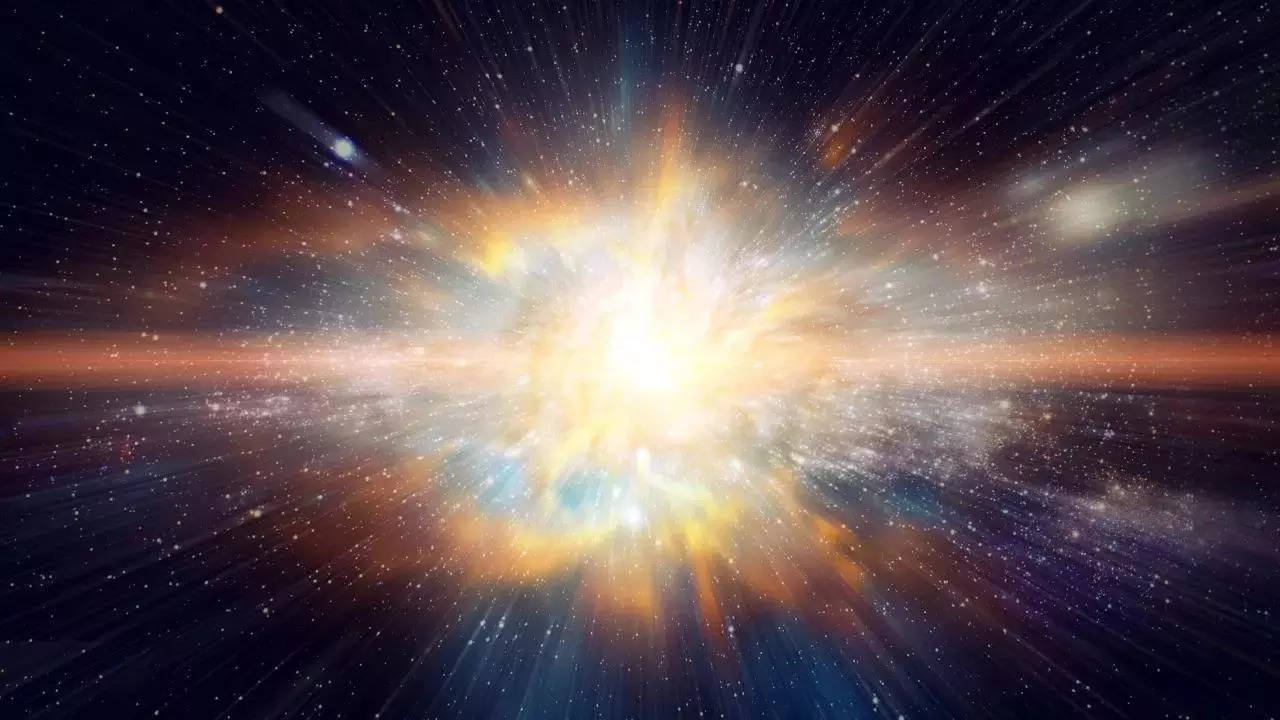NEW DELHI: In a groundbreaking astronomical discovery, the James Webb Space Telescope (JWST) has captured detailed images of a supernova explosion, providing unprecedented insights into the life cycle of stars. This event marks a significant milestone in our understanding of cosmic phenomena.
Dr Jane Doe, an astrophysicist at Nasa, said, “The data we are receiving from the JWST is revolutionizing our knowledge of supernovae.The clarity and detail of these images are unlike anything we’ve seen before.”
Supernovae are colossal explosions that occur at the end of a star’s life cycle, dispersing heavy elements across the universe. These elements are crucial for the formation of planets and even life itself. The recent observations by JWST have allowed scientists to study the intricate structures and compositions of these explosions with remarkable precision.
“The James Webb Space Telescope’s advanced capabilities enable us to observe the supernova’s shock waves and the subsequent interaction with the surrounding interstellar medium,” said Dr John Smith, a leading researcher at the Space Telescope Science Institute. “This helps us understand how elements like carbon, iron, and oxygen are distributed in the cosmos.”
The captured supernova, named SN2024a, is located in a distant galaxy, approximately 10 million light-years away. The images reveal intricate details of the explosion, including the outer shock wave and the remnants of the star’s core.
“The level of detail is astonishing,” commented Dr. Emily White, an astronomer at the European Space Agency. “We can see the layers of ejected material and how they interact with the surrounding space. This will help us refine our models of stellar evolution and explosion mechanisms.”
The JWST, launched in December 2021, is designed to observe the universe in infrared light, which allows it to peer through cosmic dust and uncover hidden structures. Its powerful instruments have opened a new era of astronomy, enabling scientists to explore the universe’s earliest galaxies and the formation of stars and planets.
“This is just the beginning,” said Dr. Doe. “The James Webb Space Telescope will continue to provide us with invaluable data, pushing the boundaries of our knowledge and sparking new discoveries.”
The scientific community eagerly anticipates further revelations from the JWST, as it continues to unveil the mysteries of the cosmos.
Dr Jane Doe, an astrophysicist at Nasa, said, “The data we are receiving from the JWST is revolutionizing our knowledge of supernovae.The clarity and detail of these images are unlike anything we’ve seen before.”
Supernovae are colossal explosions that occur at the end of a star’s life cycle, dispersing heavy elements across the universe. These elements are crucial for the formation of planets and even life itself. The recent observations by JWST have allowed scientists to study the intricate structures and compositions of these explosions with remarkable precision.
“The James Webb Space Telescope’s advanced capabilities enable us to observe the supernova’s shock waves and the subsequent interaction with the surrounding interstellar medium,” said Dr John Smith, a leading researcher at the Space Telescope Science Institute. “This helps us understand how elements like carbon, iron, and oxygen are distributed in the cosmos.”
The captured supernova, named SN2024a, is located in a distant galaxy, approximately 10 million light-years away. The images reveal intricate details of the explosion, including the outer shock wave and the remnants of the star’s core.
“The level of detail is astonishing,” commented Dr. Emily White, an astronomer at the European Space Agency. “We can see the layers of ejected material and how they interact with the surrounding space. This will help us refine our models of stellar evolution and explosion mechanisms.”
The JWST, launched in December 2021, is designed to observe the universe in infrared light, which allows it to peer through cosmic dust and uncover hidden structures. Its powerful instruments have opened a new era of astronomy, enabling scientists to explore the universe’s earliest galaxies and the formation of stars and planets.
“This is just the beginning,” said Dr. Doe. “The James Webb Space Telescope will continue to provide us with invaluable data, pushing the boundaries of our knowledge and sparking new discoveries.”
The scientific community eagerly anticipates further revelations from the JWST, as it continues to unveil the mysteries of the cosmos.






